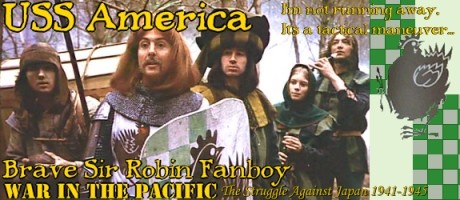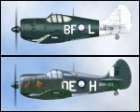Apollo11
Posts: 24082
Joined: 6/7/2001
From: Zagreb, Croatia
Status: offline

|
Hi all,

quote:
Dambusters raid recreated to reveal mystery of the bouncing bombs
By Jerome Taylor
Monday, 2 May 2011
Independedt UK
It has gone down in history as one of the world's most daring bombing raids – a feat of engineering matched only in complexity by the sheer bravery of the pilots who carried it out.
But while the "Dambuster" raid on Germany's Ruhr Valley during the Second World War was one of the RAF's finest moments, virtually all the technical notes used to make the mission a success were lost in the 1960s. Now a team of scientists has recreated the mission, carried out by the RAF's 617 Squadron known as the Dambusters, on a lake in Canada, including the construction and launch of the same kind of spinning bomb used to breach the Möhne and Edersee dams in May 1943.
The feat is the culmination of a two-year attempt by engineers to understand how the bombing raids were carried out. A maverick inventor, Barnes Wallis, came up with the idea of using bouncing bombs to jump over the heavy torpedo nets protecting Nazi Germany's dams. But his notes and designs were lost in a flood, leaving modern engineers unsure of the exact mechanics of the daring operation.
Led by Hugh Hunt, a Cambridge University engineering expert, a team of scientists decided to recreate the bombing run by building a replica dam on a Canadian lake which they then destroyed using a bouncing bomb dropped from a Second World War-era Douglas DC-4.
"There's no massive mystery in a theoretical sense but the fact that no one has been able to repeat the mission meant that there was no one alive who knew whether it was difficult, easy, or indeed possible," Dr Hunt said. "The question was finding out whether anyone could do it again."
The project is the subject of a two-hour documentary, Dambusters – Building the Bouncing Bomb, which will be broadcast tonight at 8pm on Channel 4. The mechanics behind Operation Chastise, the original Second World War attempt to try crippling one of Nazi Germany's busiest industrial valleys, had never been attempted before in wartime.
With the Battle of Britain won, Allied command was desperate to take the fight to Germany and attention centred on the Ruhr Valley, a densely populated area that played a key role in arming the Nazi war machine.
Mass-bombing runs could have set production back but were often inaccurate. Instead, air chiefs settled on a daring plan to hit a string of dams across the valley. If the dams could be breached, western Germany would be hit with a double whammy: vital hydroelectric plants would be crippled and the area would be flooded with millions of tons of water. The dams themselves were protected by anti-aircraft batteries and thick torpedo nets. Mr Wallis came up with the idea of using barrel-shaped bombs, dropped from a low height,that would spin backwards at 500rpm and skim across the surface of the water before hitting the side of the dams, sinking to the bottom and exploding.
The Canadian authorities would not allow the modern-day re-enactment to use a live incendiary, so explosives inside the dam instead were detonated once the pilots had carried out a successful direct hit.
A clip of the documentary shows the DC-4 approaching the dam at less than 60ft above the surface of the lake and dropping a spinning bomb which slams perfectly into the side of the dam. The cameramen filming the event hollers with joy as the pilot's voice crackles over the radio: "Right on, Saigon."
Dr Hunt said not every aspect of the bombing mission could be recreated faithfully. "So few Lancaster bombers survive that the team had to use World War II-vintage DC-4 aircraft instead. The dam itself was also one-third the scale of those attacked in Germany – although the rest of the project was scaled accordingly to make it realistic."
Leo "Apollo11"
_____________________________
 Prior Preparation & Planning Prevents Pathetically Poor Performance! A & B: WitW, WitE, WbtS, GGWaW, GGWaW2-AWD, HttR, CotA, BftB, CF P: UV, WitP, WitP-AE
|
 Printable Version
Printable Version





































 New Messages
New Messages No New Messages
No New Messages Hot Topic w/ New Messages
Hot Topic w/ New Messages Hot Topic w/o New Messages
Hot Topic w/o New Messages Locked w/ New Messages
Locked w/ New Messages Locked w/o New Messages
Locked w/o New Messages Post New Thread
Post New Thread